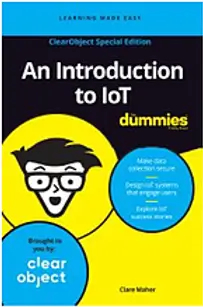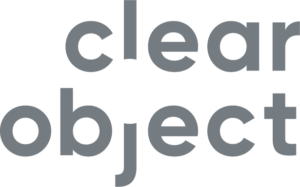3 minute read
If you do even the slightest bit of research for IoT technology, the storyline tells us the industry has gone from being one ripe with promise to one that’s now effectively mainstream. And the numbers say so.
Three years ago, for a perfect example, Gartner predicted the volume of IoT devices would reach a total of 8.4 billion worldwide in 2017. By 2020? Gartner’s outlook was that the number of IoT devices, IoT applications, IoT products, IoT services, etc., etc., would be about 20.4 billion.
More numbers. Also in 2017, IDC’s spending forecasts for IoT technology predicted that companies globally would appropriate a cool $800 billion that year to drive IoT projects. But with a projected year-over-year growth rate of nearly 17%, the analysts at IDC additionally estimated global IoT spending could reach as much as $1.5 trillion by 2021.
Those forecasts were right. And more than anything, what they tell us is that the world has essentially become one big IoT platform. Connected IoT devices and IoT applications are everywhere, and tools like AI, machine learning and data analytics continue to lend to IoT’s endless possibilities.
Yet even at this stage of its maturity and adoption, IoT is still somewhat of a mystery for many organizations…
Curbing the IoT technology learning curve

We’ve lost count of how many IoT for Dummies books are on the bookshelves right now, but ClearObject published ours in 2018 and everything in it still applies. In fact, our ClearObject Special Edition of An Introduction to IoT for Dummies is more relevant now than when it was first written. (Kudos to my predecessor, Clare Maher, the book’s author.)
As Clare puts it, ClearObject’s version of IoT For Dummies explains IoT with simple language and actionable examples, dives into the role data plays in the IoT arena, and explores just some of the industries poised to benefit from IoT technology. The book further discusses how IoT can apply to a wide range of business opportunities.
Get your free copy of our Special Edition of An Introduction to IoT for Dummies
10 takeaways of everything IoT
More compelling as a bookend, however, are the 10 takeaways of IoT in the book’s final chapter. In the ongoing education process for everything IoT, the takeaways are good guidelines for companies looking to implement IoT technology, plan IoT projects, leverage IoT devices, develop IoT applications, or take greater advantage of IoT in general.
We’ve summarized the takeaways here.
IoT already exists
The Internet of Things is like a light switch that’s already in place: It just needs someone to turn it on. The wiring is complete, and the circuits are ready to be connected. The Internet of Things is simply the catalyst to a greater understanding of connections that are already being formed, both consciously and unconsciously.
Managed services companies are poised to lead
Because of their unique position as “sticky” participants in many organization’s workflows and processes, managed services companies are poised to lead the evolution to IoT connectivity due to their ability to access the data. They can provide boots-on-the-ground knowledge about the inner workings of certain IoT systems, IoT devices and IoT applications, and can establish points for potential improvement with the customer.
IoT enables a total economic overhaul
IoT can enhance the processes that produce current revenue streams, create new revenue streams, and establish new benchmarks for efficiency in every industry.
Security demands your attention
Data sharing and gateway creation make IoT systems as well as IoT devices and IoT applications valuable, but they also make them vulnerable. There have been several security breaches related to IoT and counteractive legislation created in response.
The pros outweigh the cons
The value of the data that IoT correlates, collects, and distributes far outweighs the risks associated with IoT implementation. Connecting objects (IoT devices) and users to data streams and deploying the full might of data analytics, machine learning, AI and cognitive technology with that data enables innovation. Although you must be wary of the potential risks, you can work to proactively address them while actively embracing the endless potential of IoT technology.
User experience will ultimately determine IoT’s success
Making technology easy to use, and even incentivizing its use, ultimately enhances the experience of the user and the value to the manufacturer. The ideal IoT environment represents sophistication and simplicity coexisting in a perfect user-friendly data producing system. Data is produced when users interact with IoT technology or allow it to access their data. The data is then used intelligently to continually improve the user experience in a positive feedback loop.
Less is actually more
Don’t over-engineer IoT projects and solutions. Getting people to buy into IoT ultimately defines its success, so make sure that your solutions, whether IoT devices or IoT applications, deliver value but are not overwhelming. IoT technology can be intimidating, especially when you realize that its full value relies on largescale changes. Remember that even small changes, such as sensor implementation or new data analytics software, can have a huge impact on your business. Don’t get so caught up in trying to get all the data at once, in one fell swoop.
All industries can reap the benefits of IoT
This book touches on only a few of the industries that IoT technology can revolutionize, but no industry is immune to IoT. From agriculture to industrial manufacturing, the variety of industries currently experimenting with the worldwide (and still-emerging) IoT platform proves that the more things you can connect — that is, IoT systems, IoT devices and IoT applications — the more valuable the data produced by each thing.
IoT requires examining how everything works
Obviously, people manage to exist from day to day within the status quo. Companies run. Trains run. Cars move. However, IoT opens up to the art of the possible. It demands that people question the way things work, examine how they do what they do, and understand where they have trouble or lack insight. IoT redefines what is possible.
The time is now
No matter how small, no matter how large, begin to implement some flavor of an IoT solution into your business. Again, whether IoT systems, IoT devices or IoT applications, build your solution in an iterative fashion, leveraging partners that emphasize secure, intelligent design to ensure that your solution continually evolves with your business. If you are unsure where to start with IoT projects of any kind, find an expert to serve as your guide and partner. Understanding that your data is valuable, even if you don’t quite know how or why yet, is the first step.
The ClearObject Special Edition of An Introduction to IoT for Dummies is an informative read. We hope you take advantage of it.
About the Author

Tom Bailey is the Content Marketing Manager at ClearObject and has been writing about innovative technologies in the software and engineering industries for nearly 25 years.
About ClearObject
ClearObject is a digital transformation leader in Internet of Things (IoT) Engineering and Analytics. As IBM Watson IoT and Google Cloud Business Partners, we deliver global embedded software development environments for our customers, and design and deliver unique data analytics digital products that help them recognize the value of their data. Our objective is clear: help the world’s best companies build intelligence into their products and gain intelligence from them. The future is clear. Do you see it?
#iotprojects #iotdevices #iottechnology #iotapplications #iotplatform #machinelearning #dataanalytics

